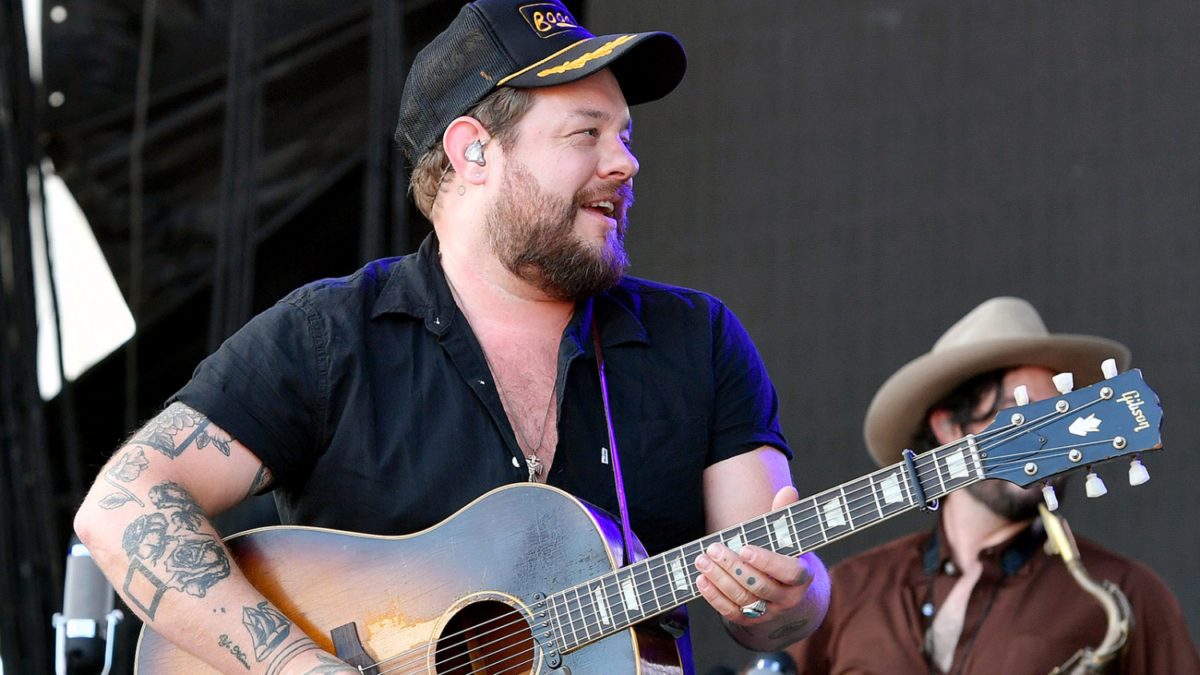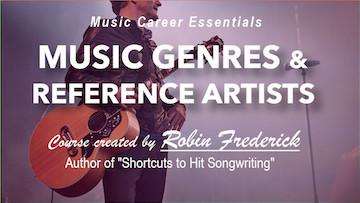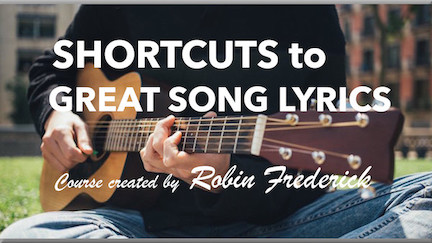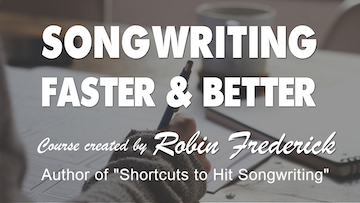“And It’s Still Alright“ is the kind of song you won’t find on the Top 40 Pop music chart but with millions of streams it clearly has plenty of appeal.
Rateliff has the ability to write powerful songs about common emotions that are shared by many, just the kind of emotions that show up in television scenes. His songs have had TV placements in Roswell, New Mexico; Yellowstone; Lethal Weapon; Grace and Frankie; Nashville; Fargo, NCIS: Los Angeles and more. Let’s see how he does it.
“And It’s Still Alright” – Nathaniel Rateliff
Songwriter: Nathaniel David Rateliff
TECHNIQUES TO HEAR AND TRY:
• Use a Verse/Verse/Bridge/Verse song structure.
• Turn your personal experience into a lyric.
• Try this phrasing pattern in your melody.
• Work on your acoustic production skills.
Listen to the song. Read the lyrics.
GENRE/STYLE: Americana
(What is a genre? Watch this video.)
Americana is a large genre that includes Indie Folk, Alt Country, Roots Rock, and traditional folk songs. Americana, in general, has a raw, playin’-on-the front-porch or down-at-the-roadhouse sound and is driven by the character of the singer, who has to come across as honest and authentic.
Indie Folk, on the other hand, can be a little more polished in terms of production. It has its roots in the lyric themes of traditional folk but often takes a more contemporary approach to the melody and harmony parts.
SONG STRUCTURE
This is an example of the Verse/Verse/Bridge/Verse structure. It’s a structure that works well for film and TV and the indie side of radio. There’s no big chorus here; instead, the energy keeps moving along at a steady pace. The song structure is…
VERSE 1 / VERSE 2 / BRIDGE
INSTRUMENTAL VERSE
VERSE 3 / VERSE 4
VERSES: The opening lines of the verses are:
VERSE1: “It ain’t alright…”
VERSE 2: “Late at night…”
VERSE 3: “I ain’t alright…”
VERSE 4: “Tonight, if you think about it…”
The opening line of any verse is a “key line”—a line that listeners are likely to notice—so it’s a good idea to write something that makes listeners want to stick around. Here the writer starts Verses 1 and 3 with almost the same phrase: “It ain’t alright” and “I ain’t alright.” Listeners might stay to find out why things aren’t alright. These two lines are also the opposite of the refrain line, “But it’s still alright.” How will the singer get from one idea to the other?
REFRAIN LINE: Without a big chorus to focus attention, this song structure has to rely on a strong refrain line to give listeners an anchor that’s easy to remember. “But it’s still alright” is a solid refrain line that sums up the singer’s emotional message. It changes on Verse 3 to “Maybe I don’t know” but returns at the end of Verse 4, the last line of the song.
BRIDGE: Begins with “They say you learn a lot out there.” Check out the LYRIC section below for an in-depth look at this beautiful song section.
ENDING: Because the refrain line replaces the payoff line that would be at the end of a chorus, this structure usually ends with a verse. You want listeners to leave the song with the most important line ringing in their ears, the one that will bring them back to listen again.
– Try It Now –
I think it’s a shame that listeners don’t get to hear that great bridge section more than once. But at just under four minutes (3:56), a repeat of the bridge might stretch things out too long. If you’d like to use this VVBV structure, I recommend dropping the instrumental verse and going directly to Verse 3. Then you can repeat the bridge afterwards and end the song with Verse 4.
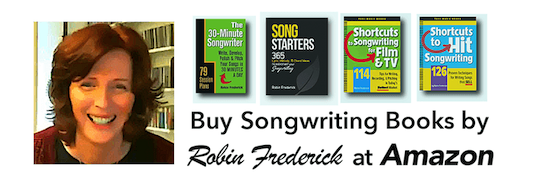
LYRICS

We encounter the singer at a moment in his life when he comes face to face with the hard facts of growing older: counting the lines on his face, mourning the friends who are lost, fighting the desire to pretend it’s not happening.
Rateliff wrote the song to work out his feelings about the end of his marriage and the death of his friend and producer Richard Swift, but no specifics are ever mentioned. This is a good example of taking personal experience and turning it into a universal lyric that a large audience can relate to. Here are a few tips on how to do that.
WRITE AN INTERNAL MONOLOGUE: There’s no storyline in this lyric and thus no personal details. Instead, we hear the singer talking to himself as he tries to get through a tough time. This gives the song an intimate feel; we’re right inside his head.
When we converse with other people, we make an effort to organize our thoughts in order to be understood. But our internal thoughts arrive in a patchwork of bits and pieces. Rateliff uses phrases that sound like the way we think—parts of sentences, quick leaps from one idea to another, jumbled expressions of a feeling—but the meaning is still clear.
“Late at night,” he thinks about what’s happening to him and tries to come to terms with it. He goes from disbelief (“the hardness of my head”) to regret (“it ain’t the way that you want”), to acceptance (“but it’s still alright”). It’s a remarkable lyric, covering a huge amount of emotional ground as the singer sorts through his feelings.
To write an internal monologue, keep your core idea clearly in mind as you write. Drill down deep into your own thoughts and feelings on the matter. Look for ways to express what you honestly think and feel. Reveal personal insights that you’ve arrived at and don’t pull punches.
USE WORDS THAT GET A REACTION: The bridge lyric is a great example of lyrics that help the listener feel what the singer is feeling. Rateliff does this by using words and phrases that evoke a response in the listener.
- Physical: scorch, burn
- Visual: bury your friends, standing out on the ledge
- Emotional: it gets worse
- Action: pray
Words and phrases like these engage listeners mentally, physically, and emotionally, allowing them to relate to and identify with the singer.
READ MORE about adding visual images, actions, and physical sensations to your lyrics.
CREATE A CHARACTER: The Americana genre often features characters who survive in the face of hard times and even tragedy. They’re truth seekers who acknowledge their losses and shortcomings but struggle on. It’s a classic American character and it’s the one you see here.
The language style and vocabulary in this lyric support the singer’s character. A vocabulary that’s too youthful or too literary would feel out of place. Instead, there are biblical and archaic overtones to this character’s speech which give us a clue to his life and upbringing: “I’ll be damned,” “idle hands,” “your time in the dark,” “praying for wings to grow.” There’s a consistency in the style that makes the character come to life and gives him depth and believability.
– Try It Now –
Describe something that’s going on in your life, or something that’s happened in the past that you feel strongly about. Relive the experience in your imagination; feel it as if it’s happening to you now.
Write down your thoughts as they occur to you. Don’t attempt to make sense of them or write complete sentences. Try to capture phrases as they happen. How do you feel physically and emotionally? What action do you feel you want to take? If you could change something, what would it be? Are you satisfied or restless? How does that feel?
Keep writing until you have a page or more of thoughts. Pull out the ones that express what you want to say and string them together. If you like what you have, add a melody.
This is a great lyric writing exercise. Do it often, even daily.
MELODY
TWISTS & SURPRISES: A good melody uses patterns of line length and repetition to create something that will keep listeners interested. “And It’s Still Alright” is no exception. Listen to Verse 1 of this song as l describe some of the tricks in the melody.
LINE 1 starts with a short phrase (“It ain’t alright”), and then takes a short pause before the lyric continues with “the hardness of my head.” It ends with an unusually long pause (7 beats) before the next line begins.
LINE 2 starts with the same melody as Line 1 (“Now close your eyes… and spin around”) but when it reaches the last note of the line, instead of another long pause, the last note turns around and becomes the beginning of a series of short, repeated melody phrases (“Say, hard times / you could find / it ain’t the way”). He finishes with one more phrase, and then pauses for another 7 beats, setting up the refrain line (“But it’s still alright”).
This is a pretty sophisticated melody. The first two lines suggest a somewhat familiar folk song style, but when the second line morphs into those short, repeated phrases, it surprises the listener. It’s not what we expect.
By starting those phrases early and creating a burst of energy before pausing to set up the payoff line, Rateliff adds a fresh twist to the song. In Verse 2, he adds a repeat of those three short melody phrases, as if to say “just in case you liked it, here’s more.” These techniques are more characteristic of today’s Singer-Songwriter and Pop melodies than traditional Folk, giving the song a more contemporary, indie vibe.
CONTRAST: Contrast in the melody between sections is what defines a song’s structure. Contrast is often created by raising or lowering the note range. Here, the bridge melody remains in exactly the same note range as the verse. To create contrast, the melody subtly evens up the note rhythm and uses more note repetition to let the listener know they’re in a different song section. Give a listen to the verse and bridge to see if you can hear the difference in the melody.
If you’re writing a song in this style, I recommend increasing the contrast between the verses and the bridge by raising the note range of the bridge. Your bridge will sound more like a chorus, giving the listener a welcome shot of energy and added memorability.
– Try It Now –
Sing the bridge of this song in a higher note range than the verse. Do you feel a difference in the energy? Do you think it adds more or less impact?
To embed the type of fresh melody twist this song has and make it a spontaneous choice when writing your own songs, learn to play and sing the verse section until it feels comfortable. Play around with it by adding your own lyric and changing the note pitches.
CHORDS
The Americana genre sticks to basic chords: C, Amin, F, G. Nothing fancy. You’ll find the chords with lyrics here.
PRODUCTION
Since many of us are temporarily prevented from congregating in small studios with session players, band members, or even an engineer, now is a good time to work on your home recording skills. I intentionally chose a song with an organic, acoustic sound, the kind that many of you can record in a home studio.
ADD MOMENTUM: The acoustic rhythm guitars are the driving force behind this track, giving it a feeling of motion and momentum that’s useful for film and TV scenes. Even an introspective scene can use a little added energy, and if it involves traveling (walking, driving, train rides, or buses) so much the better.
ADD LAYERS: Listen closely for the addition of electric guitars, more acoustic guitars, and pedal steel as the production moves along. As an exercise, create a layout of the arrangement, a map of what is playing where. You could probably replace the pedal steel with electric guitar, and then try recording something similar. There are other sonic colors in the instrumental section that I suspect were played on a synth keyboard but could also be created on electric guitar. Listen and decide how you would do it.
– Try It Now –
Fire up your home studio and record a few tracks of acoustic rhythm guitar. See how close you can come to the smooth, wide sound of the guitars on Rateliff’s track. When you have a sound you like make a note of the settings or create a template file to use when recording acoustic guitars.
READ MORE SONG GUIDES ON THIS SITE and learn from the hits!
